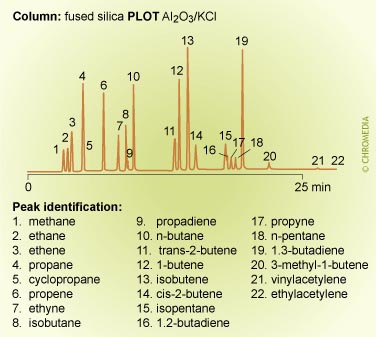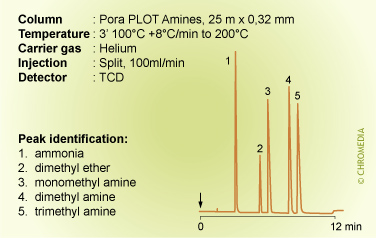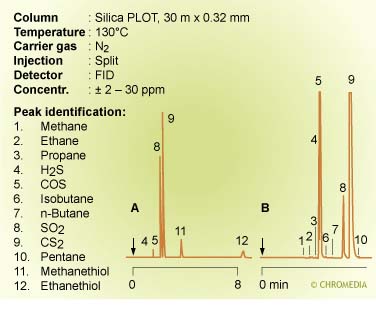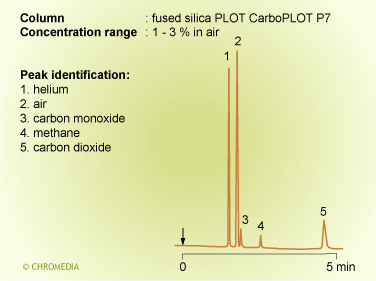Lowox PLOT column
The analysis of oxygenated compounds in hydrocarbon streams is of great importance in the petrochemical industry. A particular example is the poisoning of catalysts in industrial processes.
In many cases the analysis is carried out by automated column-switching systems and analysers, such as the LOWOX analyser. Here a combination of a non-polar pre-column and a (very) polar separation column is applied. The precolumn is used to carry out a pre-separation based on boiling points of the fractions in the sample. The second column separates the oxygenates, based on polarity. At the same time the precolumn is back-flushed to vent the heavier hydrocarbon fractions out of the system.
Using such a configuration, it is possible to analyse low boiling oxygenates in C1 to C5 hydrocarbon streams at ppm to ppb levels. The LOWOX column in this analyser has an extremely high polarity: DME (dimethylether) elutes after dodecane (n-C12), methanol after C14 at a column temperature of 200°C!
Separation of C1-C5
CP-PoraPLOT for Amines
Basic modified porous polymers are an excellent alternative for thick film WCOT columns for the separation of volatile amines. This type of columns, such as the CP-PoraPLOT for Amines, was introduced in 1993. This column generates retention and separation of very volatile amines, such as ammonia, mono, di- and triethylamine.
Aqueous samples can also be injected directly without affecting the column stability. Higher boiling amines (above hexylamine) will generate too much retention on this column. Also alcohols elute with poor peak shapes.

Sulphur compounds on SilicaPLOT
Separation of CO and CO2 in air
 Did you ever try to explain separation to your employees or students? Well, try no more: Lee Polite did it for you in a way which is hard to beat. We will open up one example of his whiteboard class.
Did you ever try to explain separation to your employees or students? Well, try no more: Lee Polite did it for you in a way which is hard to beat. We will open up one example of his whiteboard class. 




